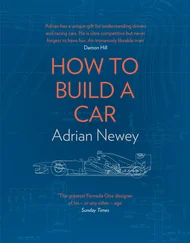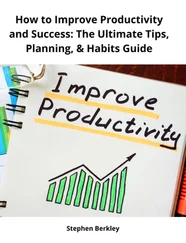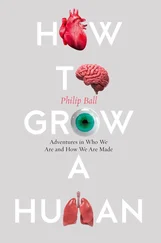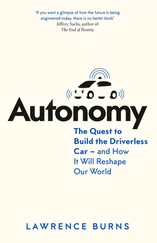Eyal, Nir - Hooked - How to Build Habit-Forming Products
Здесь есть возможность читать онлайн «Eyal, Nir - Hooked - How to Build Habit-Forming Products» весь текст электронной книги совершенно бесплатно (целиком полную версию без сокращений). В некоторых случаях можно слушать аудио, скачать через торрент в формате fb2 и присутствует краткое содержание. Год выпуска: 2014, Издательство: Nir Eyal, Жанр: Старинная литература, на английском языке. Описание произведения, (предисловие) а так же отзывы посетителей доступны на портале библиотеки ЛибКат.
- Название:Hooked: How to Build Habit-Forming Products
- Автор:
- Издательство:Nir Eyal
- Жанр:
- Год:2014
- ISBN:нет данных
- Рейтинг книги:5 / 5. Голосов: 1
-
Избранное:Добавить в избранное
- Отзывы:
-
Ваша оценка:
- 100
- 1
- 2
- 3
- 4
- 5
Hooked: How to Build Habit-Forming Products: краткое содержание, описание и аннотация
Предлагаем к чтению аннотацию, описание, краткое содержание или предисловие (зависит от того, что написал сам автор книги «Hooked: How to Build Habit-Forming Products»). Если вы не нашли необходимую информацию о книге — напишите в комментариях, мы постараемся отыскать её.
Hooked: How to Build Habit-Forming Products — читать онлайн бесплатно полную книгу (весь текст) целиком
Ниже представлен текст книги, разбитый по страницам. Система сохранения места последней прочитанной страницы, позволяет с удобством читать онлайн бесплатно книгу «Hooked: How to Build Habit-Forming Products», без необходимости каждый раз заново искать на чём Вы остановились. Поставьте закладку, и сможете в любой момент перейти на страницу, на которой закончили чтение.
Интервал:
Закладка:
***
Remember and Share
- The Investment Phase is the fourth step in the Hook Model.
- Unlike the Action Phase, which delivers immediate gratification, the Investment Phase is about the anticipation of rewards in the future.
- Investments in a product create preference because of our tendency to overvalue our work, be consistent with past behaviors, and avoid cognitive dissonance.
- Investment comes after the variable reward phase when users are primed to reciprocate.
- Investments increase the likelihood of users returning by improving the service the more it is used. They enable the accrual of stored value in the form of content, data, followers, reputation or skill.
- Investments increase the likelihood of users passing through the Hook again by loading the next trigger to start the cycle all over again.
***
Do This Now
Refer to the answers you came up with in the last “Do This Now” section to complete the following exercises:
- Review your flow. What “bit of work” are your users doing to increase their likelihood of returning?
- Brainstorm three ways to add small investments into your product to:
- Load the next trigger
- Store value as data, content, followers, reputation and skill
- Identify how long it takes for a “loaded trigger” to re-engage your users. How can you reduce the delay to shorten cycle-time through the Hook?
6. WHAT ARE YOU GOING TO DO WITH THIS?
The Hook Model is designed to connect the user’s problem with the designer’s solution frequently enough to form a habit. It is a framework for building products that solve user needs through long-term engagement.
As users pass through cycles of The Hook Model, they learn to meet their needs with the habit-forming product. Effective hooks transition users from relying upon external triggers to cueing mental associations with internal triggers. Users move from states of low engagement to high engagement and from low preference to high preference.
You are now equipped to use the Hook Model to ask yourself these five fundamental questions for building effective hooks:
1.
What do users really want? What pain is your product relieving? (Internal Trigger)
2.
What brings users to your service? (External Trigger)
3.
What is the simplest action users take in anticipation of reward, and how can you simplify your product to make this action easier? (Action)
4.
Are users fulfilled by the reward, yet left wanting more? (Variable Reward)
5.
What “bit of work” do users invest in your product? Does it load the next trigger and store value to improve the product with use? (Investment)
***
The Morality of Manipulation
So now what? Now that you’re aware of the pattern for building habit-forming technology, how will you use this knowledge?
Perhaps while reading this book you asked yourself if the Hook Model is a recipe for manipulation. Maybe you felt a bit unsettled reading what seemed like a cookbook for mind control. If so, that is a very good thing.
The Hook Model is fundamentally about changing people’s behaviors; but the power to build persuasive products should be used with caution. Creating habits can be a force for good, but it can also be used for nefarious purposes. What responsibility do product makers have when creating user habits?
Let’s admit it, we are all in the persuasion business. [cxiii]Technologists build products meant to persuade people to do what we want them to do. We call these people “users” and even if we don’t say it aloud, we secretly wish every one of them would become fiendishly hooked to whatever we’re making. I’m guessing that’s likely why you started reading this book.
Users take their technologies with them to bed. [cxiv]When they wake up, they check for notifications, tweets, and updates, sometimes even before saying “Good morning” to their loved ones. Ian Bogost, the famed game creator and professor, calls the wave of habit-forming technologies the “cigarette of this century” and warns of their equally addictive and potentially destructive side-effects. [cxv]
You may be asking, “When is it wrong to manipulate users?”
Manipulation is an experience crafted to change behavior — we all know what it feels like. We’re uncomfortable when we sense someone is trying to make us do something we wouldn’t do otherwise, like when sitting through a car salesman’s spiel or hearing a timeshare presentation.
Yet, manipulation doesn’t always have a negative connotation. If it did, how could we explain the numerous multi-billion-dollar industries that rely heavily on users being willingly manipulated?
If manipulation is an experience crafted to change behavior, then Weight Watchers, one of the most successful mass-manipulation products in history, fits the definition. [cxvi]Weight Watchers customers’ decisions are programmed by the designer of the system. Yet, few question the morality of the business.
But what is the difference? Why is manipulating users through flashy advertising or addictive video games thought to be distasteful while a strict system of food rationing is considered laudable? While many people see Weight Watchers as an acceptable form of user manipulation, our moral compass has not caught up with what the latest technology now makes possible.
Ubiquitous access to the web, transferring greater amounts of personal data at faster speeds than ever before, has created a more potentially addictive world. According to famed Silicon Valley investor Paul Graham, we haven’t had time to develop societal “antibodies to addictive new things.” [cxvii]Graham places responsibility on the user: “Unless we want to be canaries in the coal mine of each new addiction — the people whose sad example becomes a lesson to future generations — we’ll have to figure out for ourselves what to avoid and how.”
But what of the people who make these manipulative experiences? After all, the corporations that unleash these habit-forming, and at times addictive, technologies are made up of human beings with a moral sense of right and wrong. They too have families and kids who are susceptible to manipulation. What shared responsibilities do we growth-hackers and behavior-designers have to our users, to future generations, and to ourselves?
With the increasing pervasiveness and persuasiveness of personal technology, some industry insiders have proposed creating an ethical code of conduct. [cxviii]Others believe differently: Chris Nodder, author of the book Evil by Design, writes “... it’s OK to deceive people if it’s in their best interests, or if they’ve given implicit consent to be deceived as part of a persuasive strategy.” [cxix]
I offer a simple decision support tool entrepreneurs, employees, and investors can use long before product is shipped or code is written. The Manipulation Matrix does not try to answer which businesses are moral or which will succeed, nor does it describe what can and can not become a habit-forming technology. The matrix seeks to help you answer not, “Can I hook my users?” but instead, “Should I attempt to?”
To use the Manipulation Matrix (figure 36), the maker needs to ask two questions. First, “Would I use the product myself?” and second, “Will the product help users materially improve their lives?”
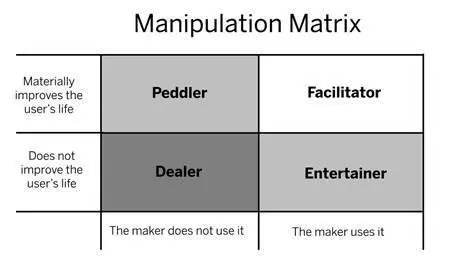
Figure 36
Remember, this framework is for creating habit-forming products, not one-time use goods. Now, let’s explore the types of creators who represent the four quadrants of the Manipulation Matrix.
Читать дальшеИнтервал:
Закладка:
Похожие книги на «Hooked: How to Build Habit-Forming Products»
Представляем Вашему вниманию похожие книги на «Hooked: How to Build Habit-Forming Products» списком для выбора. Мы отобрали схожую по названию и смыслу литературу в надежде предоставить читателям больше вариантов отыскать новые, интересные, ещё непрочитанные произведения.
Обсуждение, отзывы о книге «Hooked: How to Build Habit-Forming Products» и просто собственные мнения читателей. Оставьте ваши комментарии, напишите, что Вы думаете о произведении, его смысле или главных героях. Укажите что конкретно понравилось, а что нет, и почему Вы так считаете.


